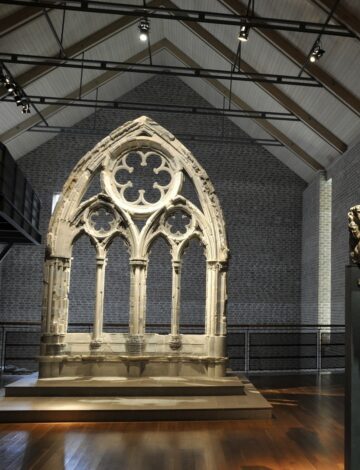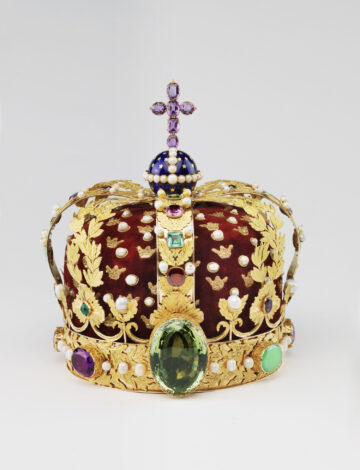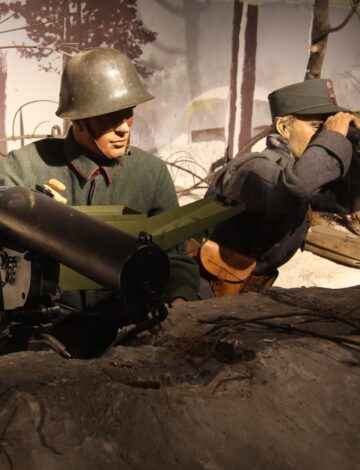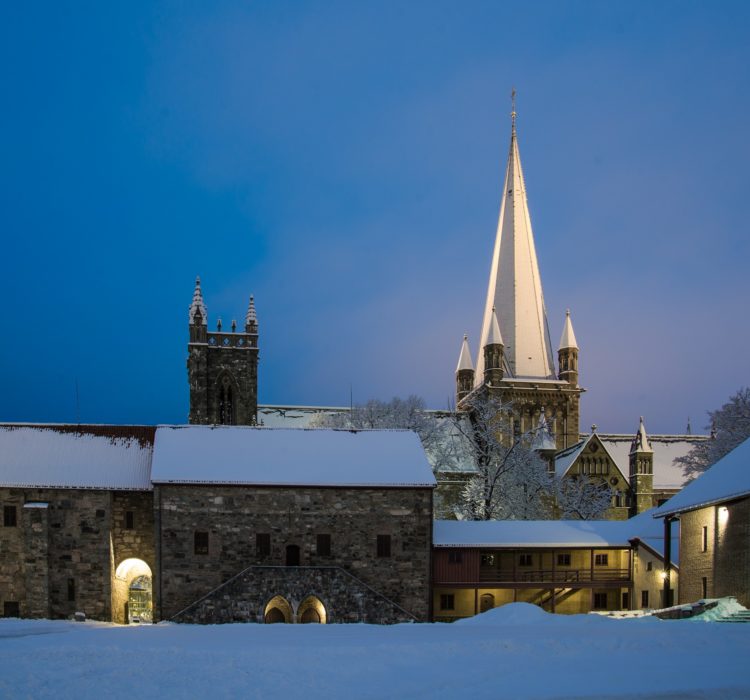The Archbishop's Palace
Together with Nidaros Cathedral, the Archbishop Palace play a central role in Norway’s history.
The Archbishop's Palace has been home to 27 archbishops. The episcopal see of Nidaros included Norway north of Dovre, Iceland, the Faeroe Islands, Greenland, Orkney and the Isle of Man. Those who resided within the episcopal see had to pay tithes to the Archbishop. The Archbishop was therefore a very wealthy man. After the Reformation ownership passed to the King and was then known as Kongsgården (the King's Estate). At that time Norway was part of a union with Denmark and the king’s throne was in Copenhagen. Aristocratic lords lived in the Archbishop’s Palace and collected taxes on behalf of the Danish king. In the late 1600s the military took over the estate and used it as a storage area.
The Archbishop's Palace in medieval times
The Archbishop lived in the north wing, which was the oldest part of the palace. This is where he received his guests, collected taxes and held magnificent banquets. At these banquets people were seated and served according to status. The most important people sat closest to the Archbishop and were given the best meals. Those with the lowest status were either served porridge or simply had to watch others eat.
The Archbishop's Palace today
Today there are three museums in the Archbishop's Palace and the oldest part of the estate is used for representation at ceremonies and banquets. In the vaults of the west wing visitors can see the Royal Regalia exhibition, where the King’s crown and other royal coronation objects are on permanent display. The Archbishop's Palace Museum has original sculptures from Nidaros Cathedral and important finds from archaeological digs on the estate conducted during the 1990s. In the Armoury military museum visitors can learn about the military history of Central Norway.

The Archbishop's Palace Museum
This museum features original sculptures from Nidaros Cathedral, and tells the colourful history of the Archbishop’s Palace through archaeological discoveries found on the site.

The Crown Regalia
The King’s Crown and the other coronation objects are on display in the west wing of the Archbishop's Palace. This breathtaking collection symbolises the Norwegian monarchy, which dates back more than one thousand years.

The Armoury
While present-day Norway might be known for its peaceful nature and democratic values, it wasn’t always that way. The Armoury offers an glimpse into Central Norway’s military history, as well as Norway's road to independence and democracy.
